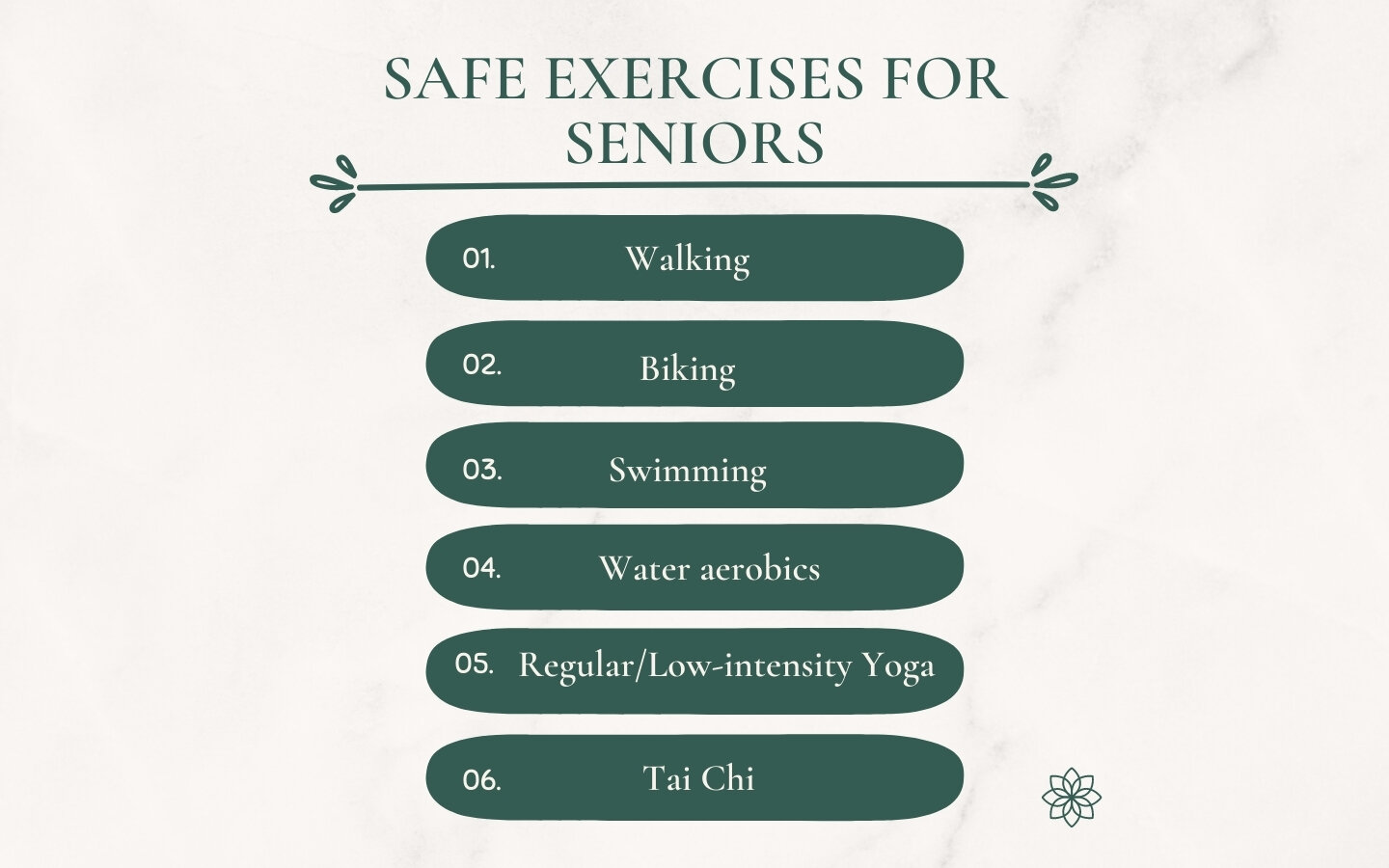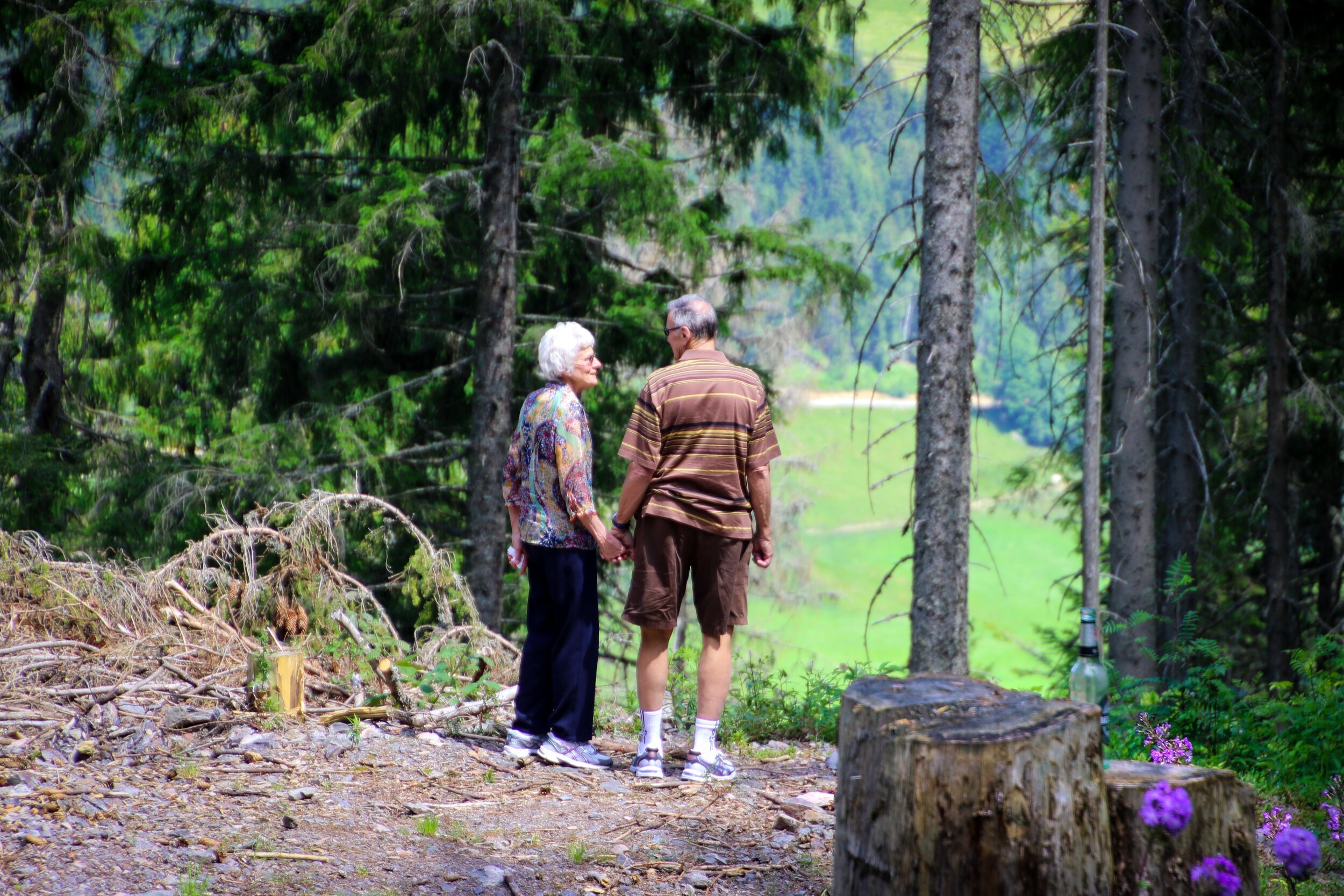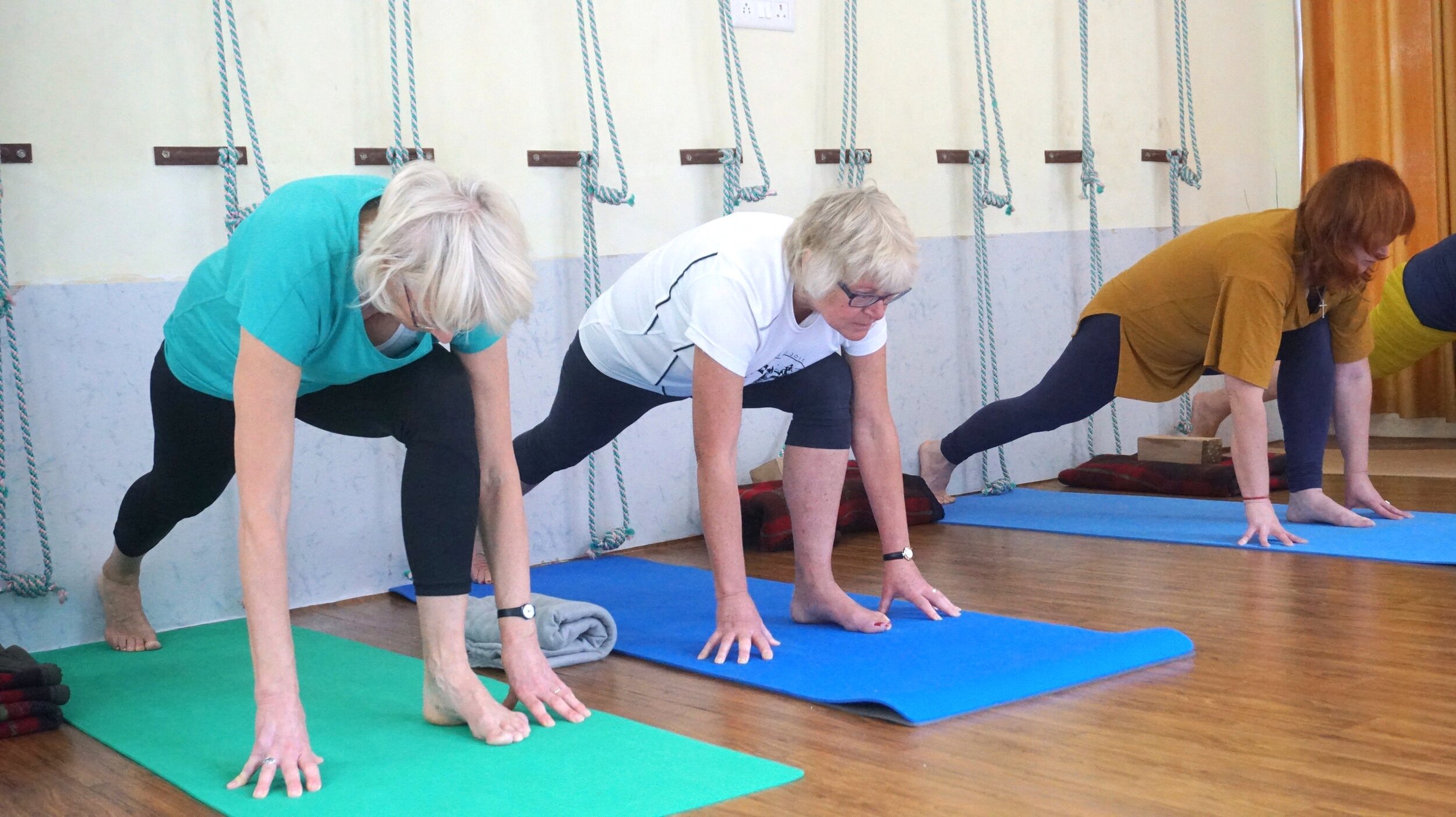Safe Exercises for Seniors
Exercising is hard in general, but can be especially so in old age. The human body’s elasticity decreases, meaning less flexibility due to the dwindling of collagen in your tendons, muscles, and bones starting at age fifty. Bone density and muscle mass gradually drop, fatigue is frequent so more recovery time is needed, injuries come easier as muscle and joint aches become more common, fat becomes harder to fight as your metabolism slows, bones become more brittle and are thus easier to break, and more.
Unfortunately, falling is one of senior citizens’ leading causes of injury and death in North America. Despite all of these difficulties, exercise is incredibly important during all walks of life. Regular exercise improves your overall mental wellbeing, physical strength, balance, energy levels, and more, which can help you prevent heart diseases and diabetes. Habitual exercise as a senior can also beget feelings of independence, dignity, happiness, and even improve your brain functioning, warding off cognitive diseases like Alzheimer’s and dementia.
Exercise is crucial; it can protect seniors against cardiovascular disease and cognitive diseases alike, and increase lifespans. Many exercises and exercise restrictions depend on your personal history – your fitness levels as a child and young adult, your physical health, what your body can handle, and more, so this list is not to say that you cannot attempt ‘riskier’ exercises as an aging adult or senior. Rather, you should take caution and mold your routine to adhere to your capabilities so as not to hurt yourself. Here are six senior-safe exercises that will help you keep healthy, as well as six exercises to avoid so as not to injure yourself.
Two seniors having a scenic walk in the forest
Senior-Safe Exercises
1) Walking
Walking is a go-to exercise for people of all ages, since it is so accessible and is not as stressful or physically demanding as other forms of exercise. 10,000 steps a day is the ‘healthy average’ for the general population, but is not achievable by everyone. If you experience joint pain or have trouble walking for any reason, try not to focus so much on the step count as much as walking at your own pace and feeling good for yourself. Perhaps walk for a shorter amount of time or smaller number of steps a day, such as between 2,000 to 5,000.
Walking is a great low-impact exercise that ultimately strengthens muscles, helps maintain weight, improves your mental state especially if you are walking in nature, and lowers risk of illness and diseases such as diabetes, colon cancer, heart disease, and osteoporosis and osteoarthritis. It is even more fun when you make a day of it and walk outside with friends or family!
Of course, if you live in a climate that experiences harsh winters, be very careful about walking; only walk on salted, snow-free sidewalks that do not have sludge or black ice so as not to slip fatally. Black ice is a danger to anyone, but a hard fall as a senior can be life-threatening. If you enjoy walking as an easy, safe form of exercise but inhabit an area with harsh winters, consider investing in a treadmill to do some light walking and keep active during the snowy months.
2) Biking
This might come as a surprise, but biking is safe for seniors and comes with plenty of benefits. When done properly and safely, this healthy, low-impact aerobic exercise is perfect for aging adults and seniors aged 55 and over. Moving your legs in circular motions to pedal is not strenuous like pounding your feet against a pavement while jogging, for instance, and damaging your ankles and knees. Weight gain is common among seniors, and as the body’s metabolism slows down, it can be extremely difficult to lose weight in old age. However, cycling burns many calories, especially if done regularly.
Biking also has wonderful effects on the heart and the mind. It keeps your blood flowing and pumping, protecting you against cardiovascular diseases, and works your brain, preventing Alzheimer’s and dementia. Staying active in this way, of course, also reduces the risk of cancer due to the lessened chances of obesity, ultimately extending your lifespan.
Certain precautions must be taken while cycling as a senior in order to protect your body. Wear a helmet, and elbow and knee pads to protect your head, limbs, and joints, as a hard and fast fall can be quite dangerous. Make sure you signal properly if you’re on the road, look around constantly to be aware of your environment, bike on paved paths or specific bike lanes, only cycle in good weather, don reflective strips or jackets, and make sure you have a bike that fits your dimensions properly.
An elderly woman enjoying a peaceful bike ride
3) Swimming
Swimming is an extremely effective full-body workout that is safe for seniors in moderate levels. Swimming is incredible for weight loss and maintenance, strength, muscle, and endurance training, and increasing cardiovascular fitness, flexibility, and even balance due to flotation. If your body is aching, a quick swim will stretch your whole body and greatly reduce the pain, since swimming reduces impact on the joints.
Swimming is like riding a bike; once you learn, you will most likely never forget. It is also not as stressful as land exercises or sports, as you become buoyant and feel light in the water. If you are looking to lose weight, it is said that leisurely swimming burns around 400 calories per hour. If you have not been swimming in a while, consider using flotation devices, kickboards, and water paddles to help keep you afloat and train your body in the right way. After a while, your muscle memory kicks in and reminds you how to swim. Plus, a refreshing dip in the pool is always welcome during hot summer days!
Of course, as with every sport, pushing yourself too hard can foster overexertion, strain, and injury, so be sure to remain safe, understand your limits, and focus on lighter, softer movements. If you have existing heart problems, you might want to opt for water aerobics instead, as swimming places more stress on the heart since it necessitates stronger cardiovascular fitness.
4) Water Aerobics
Water aerobics, also known as aqua fitness exercise, have grown in popularity among seniors in recent years. They differ from swimming as they do not require you to submerge your entire body in the water; most of the time, you will not have your face in the water. In this way, they are much easier for people who are not great swimmers or who struggle to hold their breath in the water.
Water aerobics are equally as gentle on the joints as swimming due to the buoyancy, making it a wonderful exercise for seniors with arthritis and general joint pain. Water’s natural resistance also makes it so that you do not need weights for strength training in the water. If you want, you can completely substitute water aerobics for regular strength training, as it is far safer and less stressful on the joints and bones.
If you are looking to lose weight, swimming burns more calories as it is ‘faster’. For instance, water jogging can be a bit slow – but that’s one thing that makes it so safe! In contrast, swimming moves your entire body; you propel yourself forward at varying speeds, whereas it is difficult to jog or run underwater, as the water slows you down. Either way, it is a great exercise for those looking to lose or maintain weight, increase their strength, balance, and flexibility while putting less stress on the body, and improve their mental health.
An aging adult having a dip in the sea
5) Regular or Low-Intensity Yoga
‘Regular’ or low-intensity yoga is perfectly fine for aging adults and seniors, and is in fact a popular method of exercise among those age groups. It simply depends on the type of yoga and the poses you choose to do. It is also very adaptable and modifiable to your strengths, weaknesses, and abilities, making it a unique and accessible exercise. Chair yoga, relaxation yoga, hatha yoga, and more are popular forms of low-intensity yoga.
Like all exercise, yoga is wonderful for your mental and physical health, but lighter methods like relaxation yoga can really cause you to connect with yourself and take time out of your day to unwind and forget about the stresses of aging. Practicing yoga regularly also allows you to improve your balance, flexibility, and strength, as well as maintain or lose weight and prevent health issues.
Over time, you will begin to feel your mental and physical health, flexibility, and balance improve. This can be quite dignifying and empowering for seniors, as you will ultimately decrease your risk of falling and injury. To ensure that you are staying safe, try joining a beginner or senior-specific yoga class, or practice with a friend or family member that is well-versed in yoga.
6) Tai Chi
Finally, tai chi is incredibly popular among seniors, and for good reason. It is an extremely low impact exercise that involves fluid movements, and is often touted as ‘meditation in motion’. This gentle exercise will improve your balance, muscle strength, flexibility, blood pressure, cardiovascular strength, sleep, immune system, concentration, self-esteem, mental health, and more, ultimately helping you to prevent falls and cognitive diseases like Alzheimer’s and dementia.
Much like yoga, tai chi is very accessible due to its adaptability and customization; if you require a cane or walker or struggle with balance, you may practice tai chi seated, and even modify the movements so that they are less strenuous. Regularly practiced tai chi can even improve your posture in the long run! It is a great exercise with a host of multifaceted benefits.
Like some other exercises and sports, tai chi is an exercise best suited for a class setting; joining a geriatric tai chi program or class is an excellent way to meet other people your age, make friends in your community, ensure that you are exercising safely, and for boosting your motivation while exercising.
An aging man and a woman doing tai chi together
Exercises to Avoid
1) Rock Climbing
Rock climbing should generally be avoided if you are a senior with low fitness levels, current health issues, or no previous rock-climbing experience, as it is a very high intensity level activity at all times. It requires deep concentration and extreme control, as it is rigorous and there are chances of slipping or injury.
Rock climbing targets the entire body, meaning that rock-climbers are usually quite sore afterwards, which can be difficult for seniors who require longer recovery times and who experience joint, muscle, or bone pain. There is also lots of stretching, bending, and reaching involved, which demands flexibility. Finally, your heart rate can rapidly reach between 120 to 180 beats per minute, making it dangerous for seniors.
2) Stair Climbs
Similarly, avoid stair climbs in which you are running up and down flights of stairs and risking injury due to falling or cardiovascular strain, as it is quite easy to reach your maximum heart rate doing this exercise. Step-ups are a much safer alternative and target the same muscles in your body. All you have to do is grab a stool or step up and down on the last step of a flight of stairs, and repeat. It is a low-intensity workout that is not overly strenuous like stair climbs, and you can choose how many sets you would like to do before you take a break and continue the next day.
3) Deadlifts
Deadlifts are awful for the lower back and spine. They put extreme stress on the body and its joints, which spells bad news for seniors since the body becomes more fragile as one ages. Strength training is still healthy for older people, but this particular exercise can be extremely dangerous without previous experience and good form. Improper form and stability can cause painful injuries, such as a herniated disc. An alternative could be to do a kettlebell deadlift, which is lighter than a barbell and easier to learn with proper training. Another fun, surprising alternative could be bowling!
An aging adult lifting dumbbells
4) Long Distance Running
Unless you’re a natural athlete, running outside is hard at any age and is a stark contrast to running on the treadmill. There are many benefits to running, especially running long distances regularly, such as the decreased risk of diabetes, depression, and cardiovascular disease, while improving weight control, weight loss, and bone density.
However, the costs far outweigh the benefits, especially for seniors. Pounding your feet against the pavement for even half an hour can be incredibly pain-inducing for seniors. Long distance running can cause muscle damage, inflammation, osteoarthritis, increased risk of cardiac arrest as the heart rate skyrockets while running, and overall injury. Try walking for half an hour to an hour instead to put less stress on your body.
5) High-Intensity Interval Training (HIIT)
HIIT is sometimes seen as a specific high intensity exercise where you remain in one place and keep the body moving, or it can simply refer to any sort of high intensity exercise such as rock climbing, long distance running, and more. Either way, HIIT requires a fully healthy heart and lungs. The stress on the arms and legs, too, can cause soreness and straining afterwards. You may adjust this exercise to either fit your target heart rate, make it less rigorous, or simply forgo it for other lower intensity exercises, like the ones mentioned above.
6) High Impact Yoga
There are many different types of yoga, but high impact yoga, high intensity yoga, or power yoga – all meaning the same thing – should be avoided. The stretching, bending, and twisting involved in high impact yoga is dangerous for most seniors, especially women with osteoporosis. Yoga requires lots of flexibility, and doing power yoga without that flexibility can be arduous and unsafe.
A better alternative is restorative yoga, which involves relaxation exercises and techniques, and is great for preventing dementia and Alzheimer’s due to the way it relieves stress, ultimately strengthening brain health.
A group of seniors taking a yoga class
There are many more safe and unsafe exercises for seniors, but we hope this short list helped clarify the types of activities that can be done or that should be avoided as one ages. Having a sedentary lifestyle is one of the most dangerous things you can do to yourself, but it is never too late to start or resume exercising. On average, seniors should be getting around 150 minutes of moderate-intensity aerobic exercise a week, but this evidently varies depending on health conditions.
Remaining active is crucial for healthy, graceful aging. For more tips on aging and healthy living for seniors, follow our Instagram page, continue reading our weekly blog posts, and check us out on Facebook, LinkedIn, and Pinterest.






